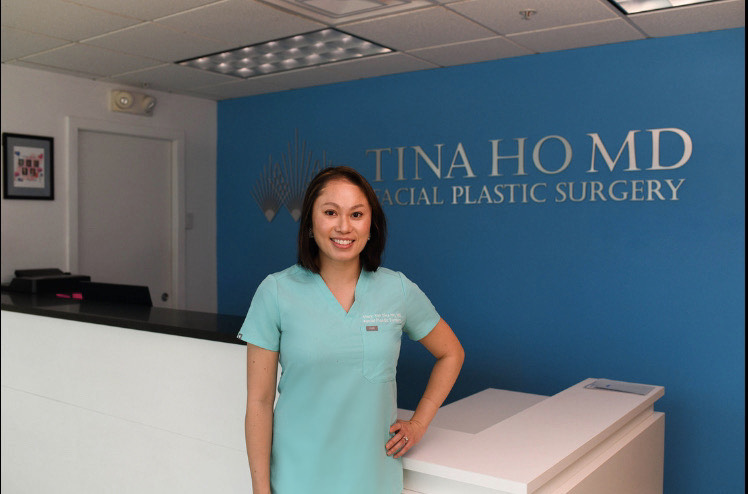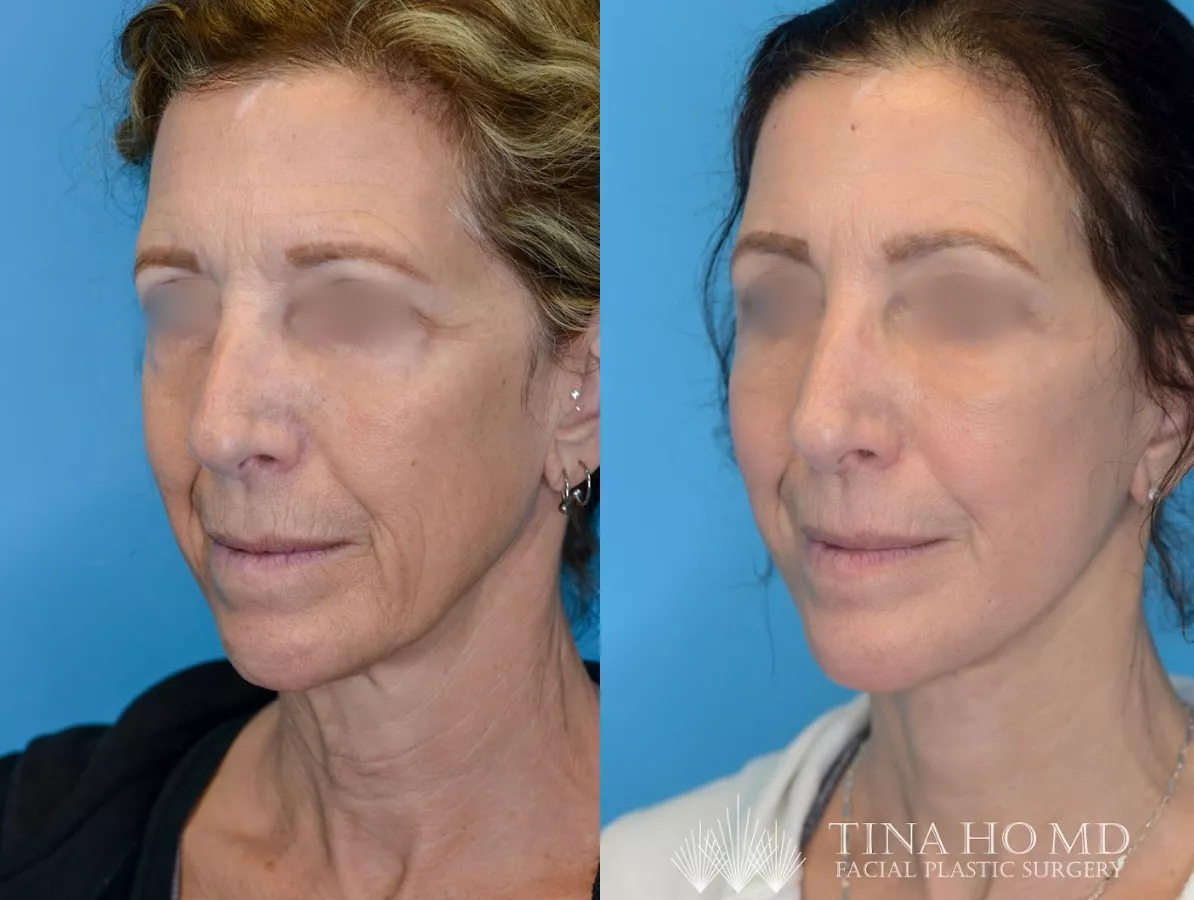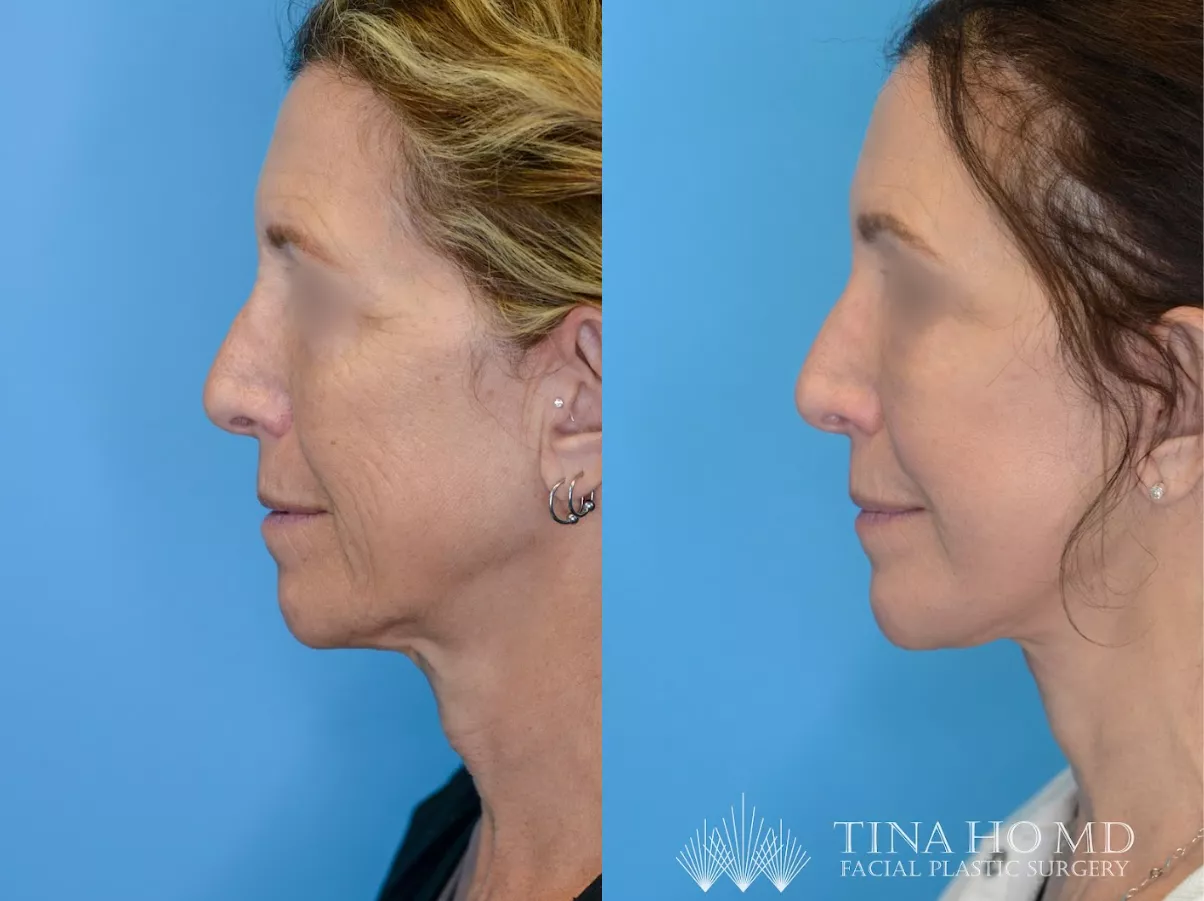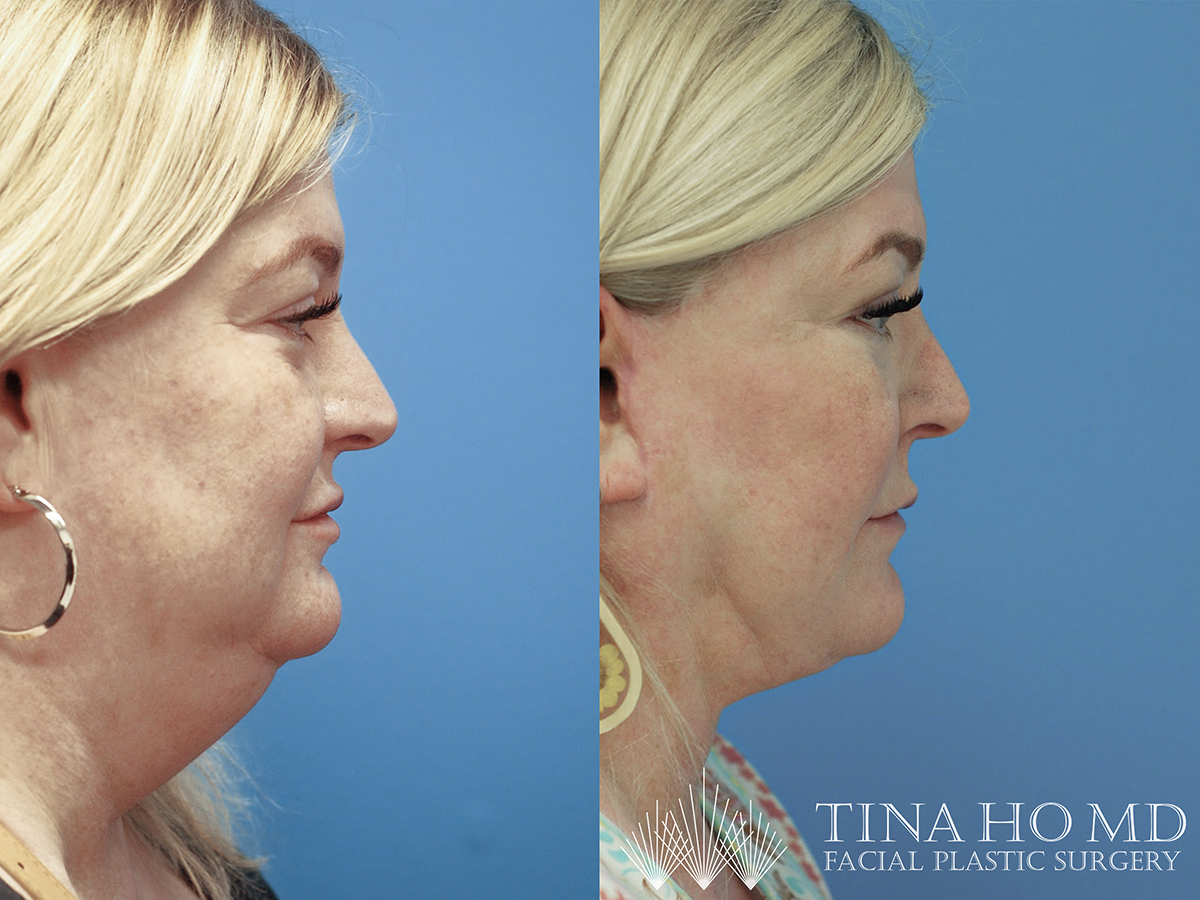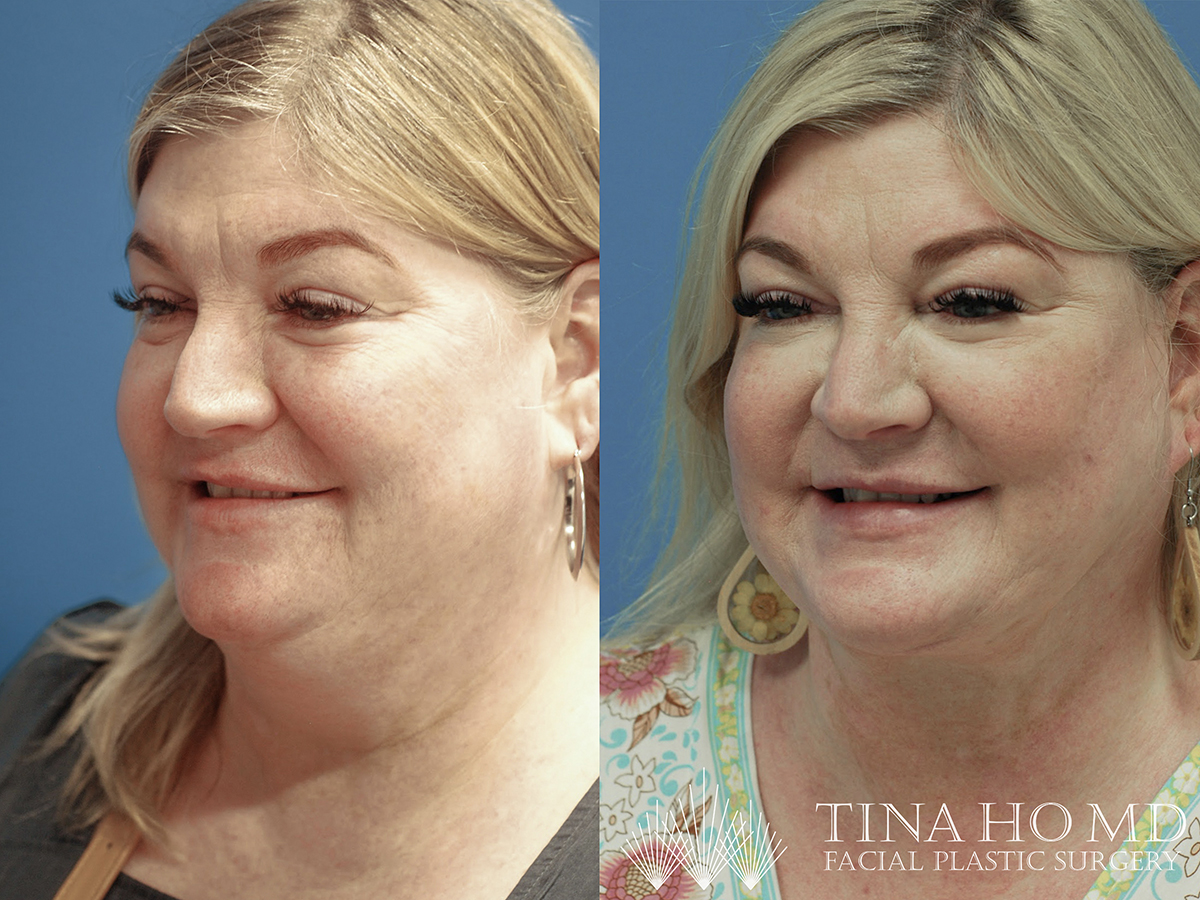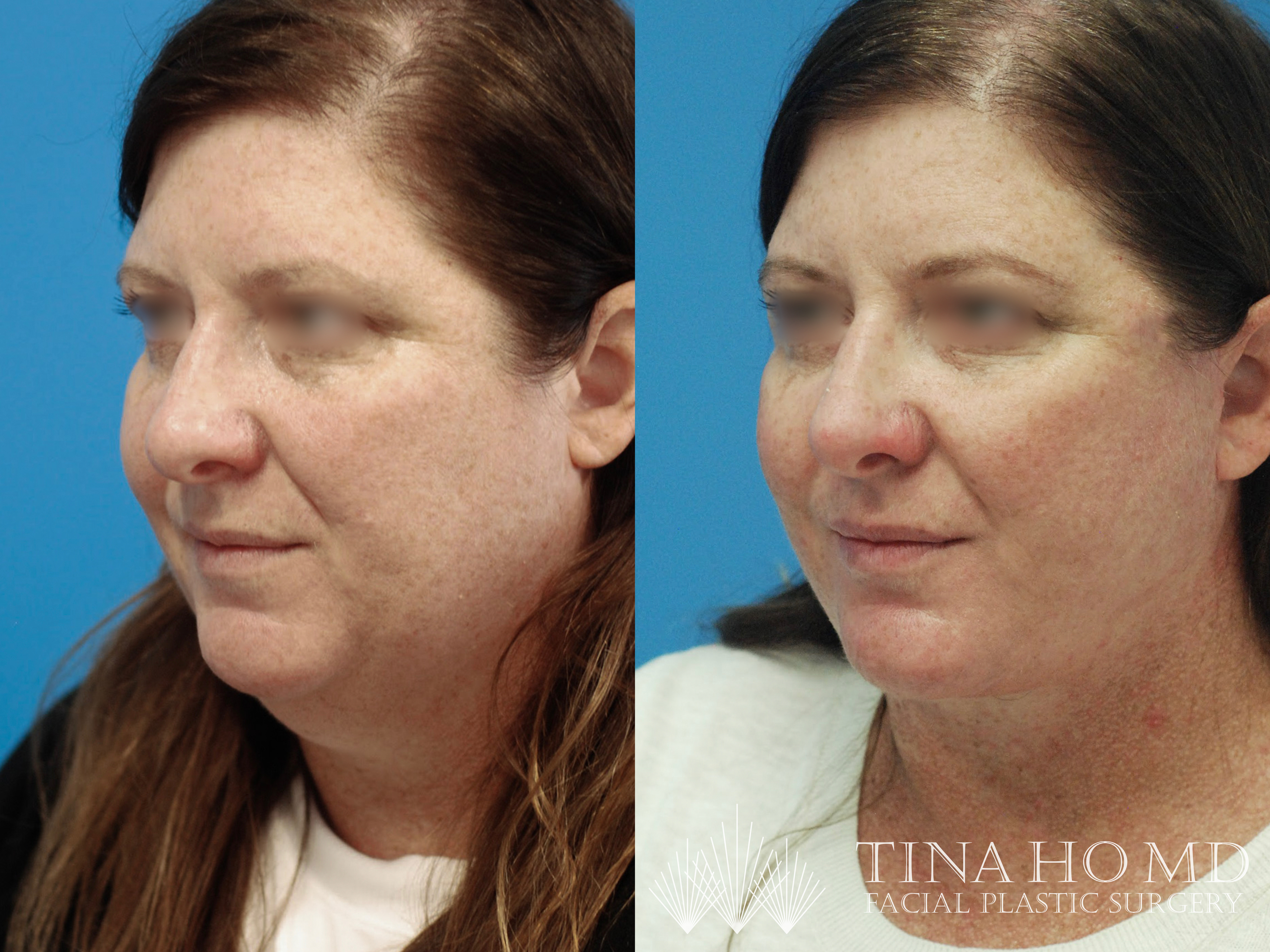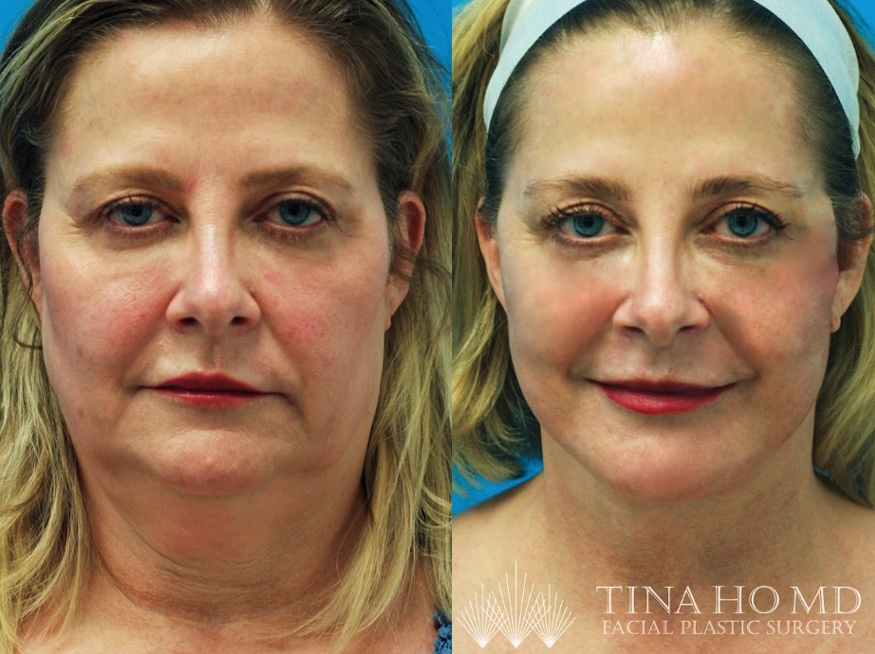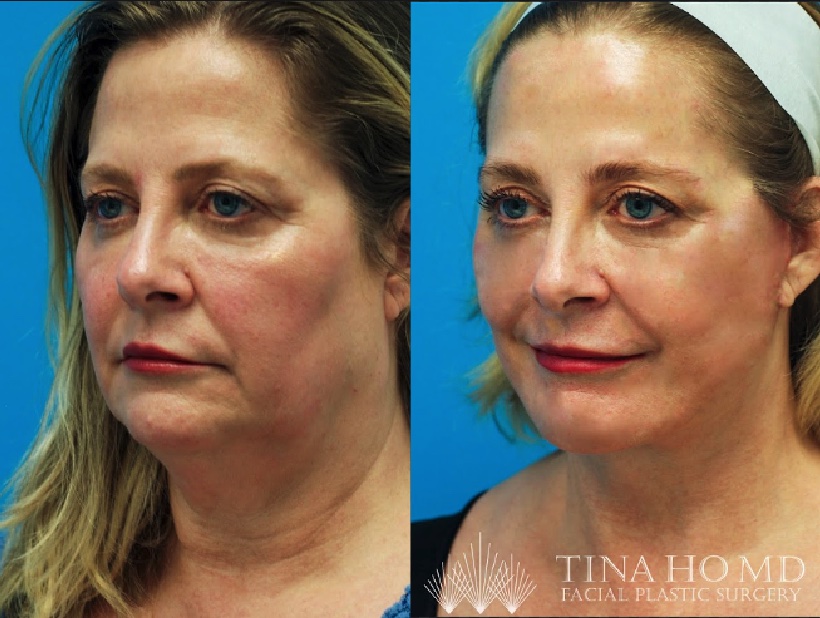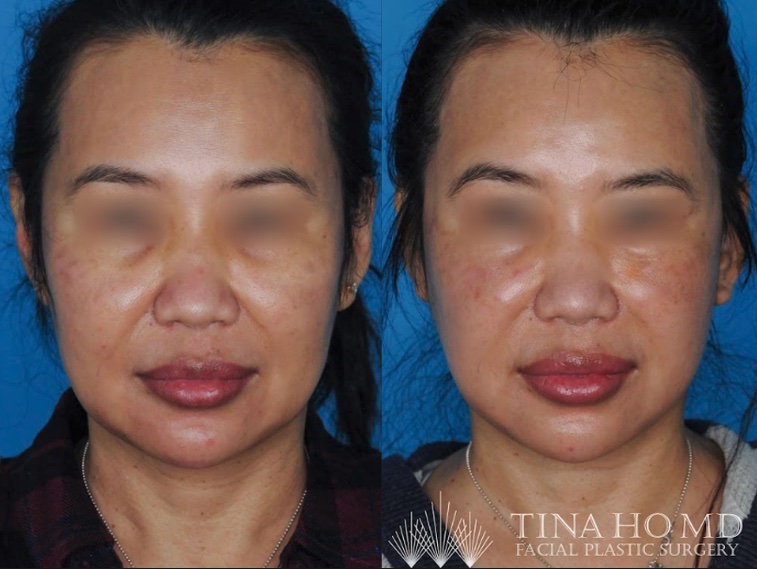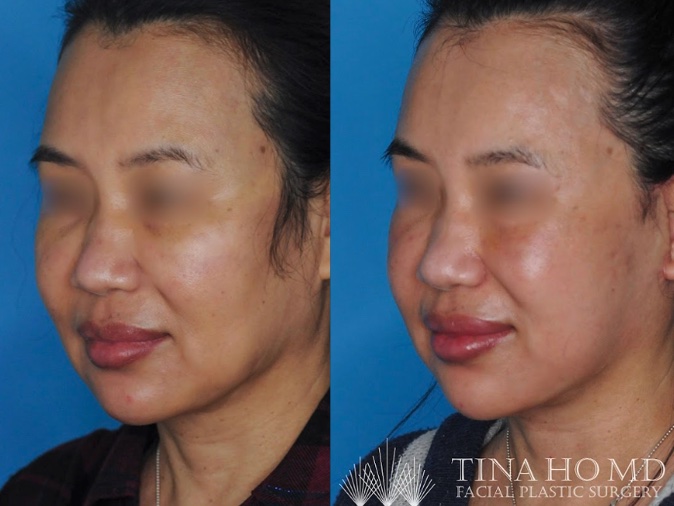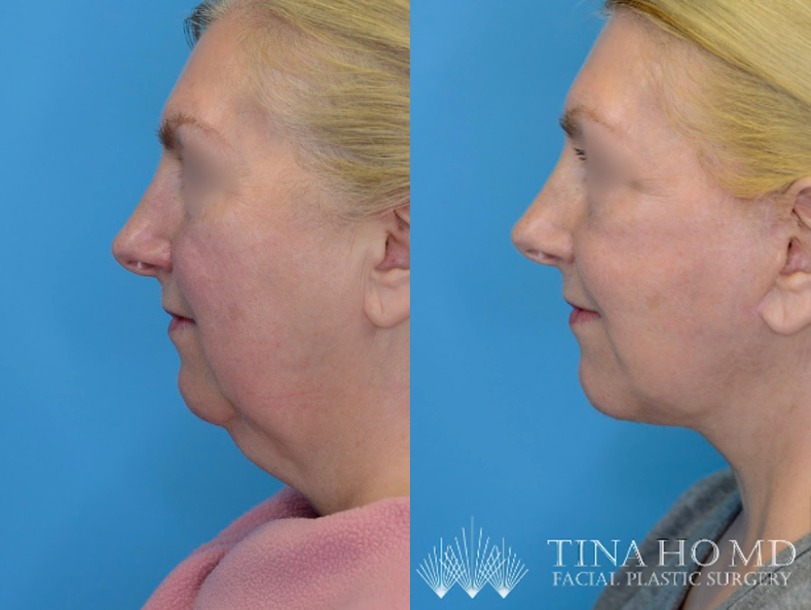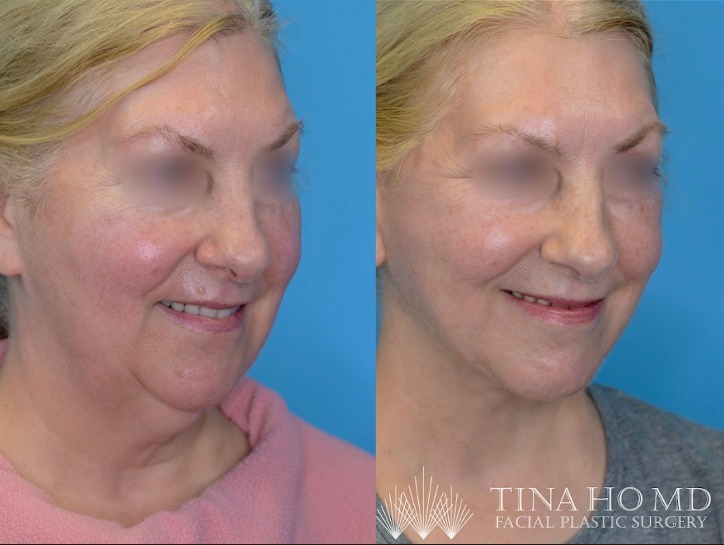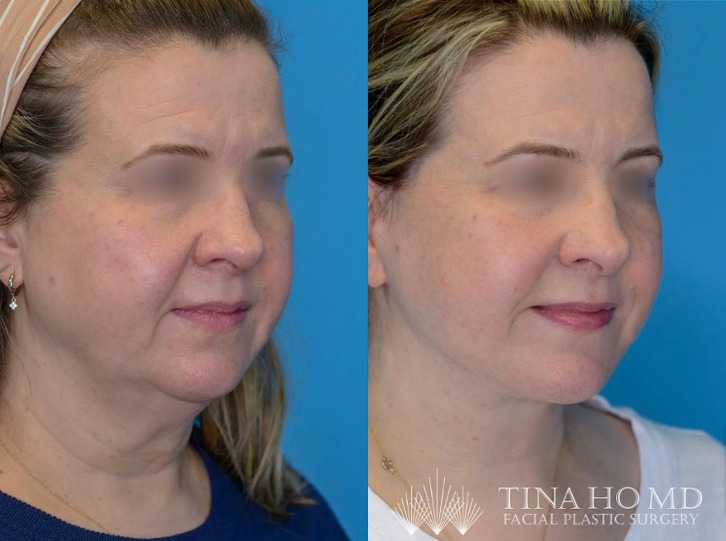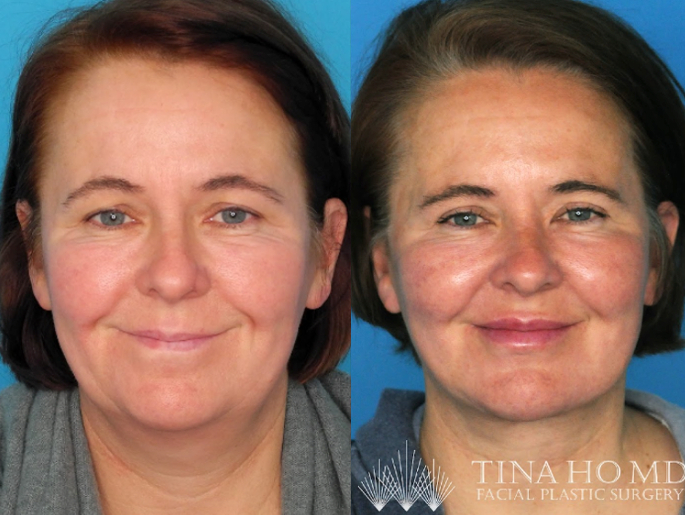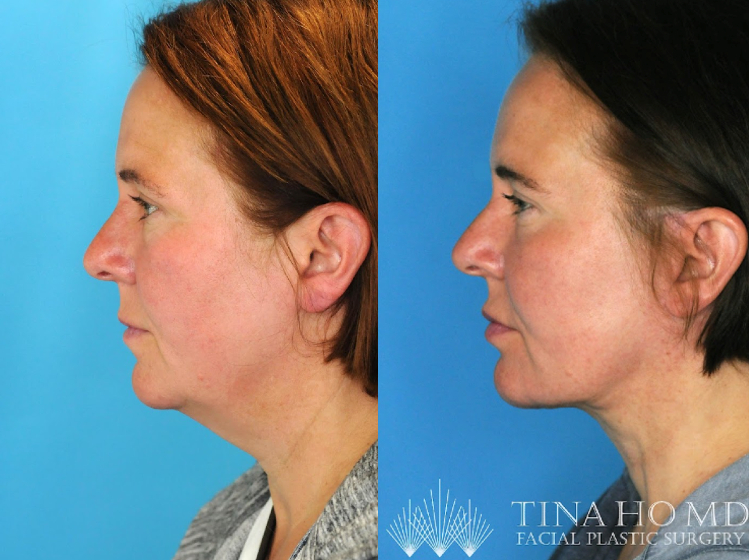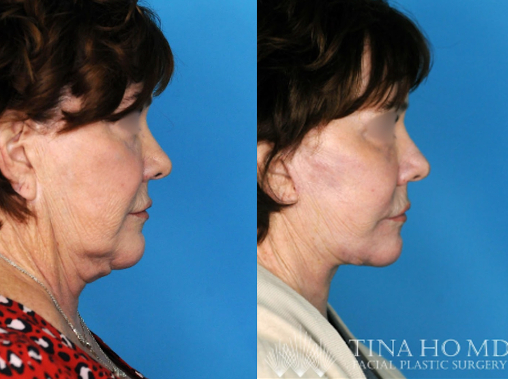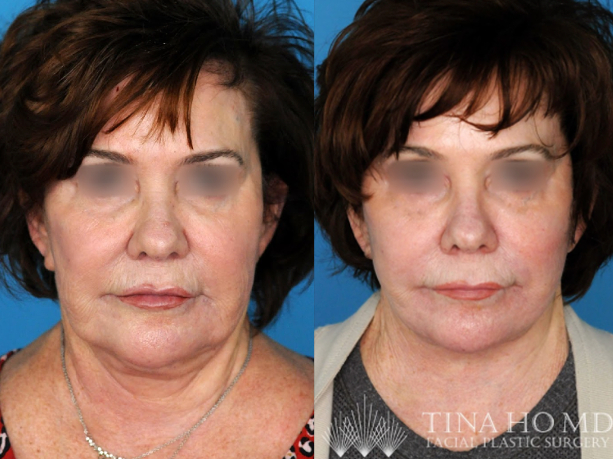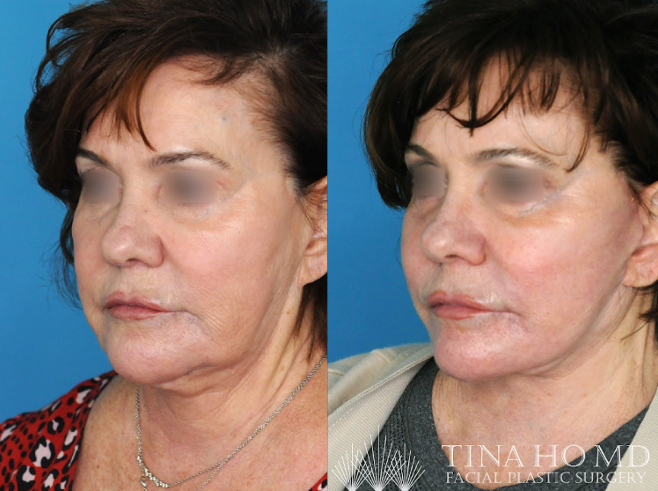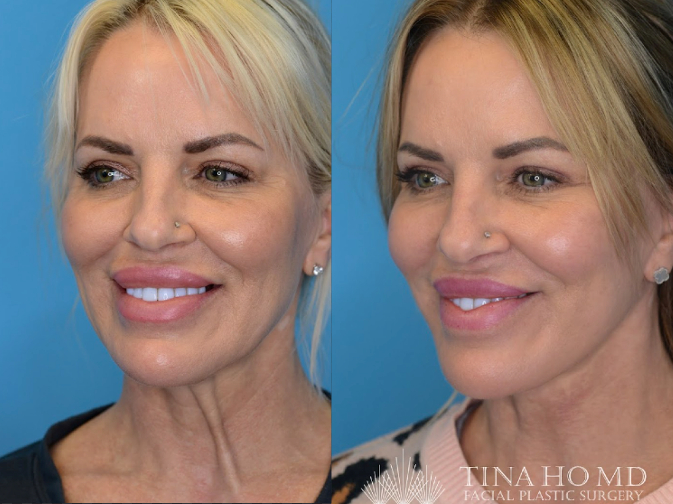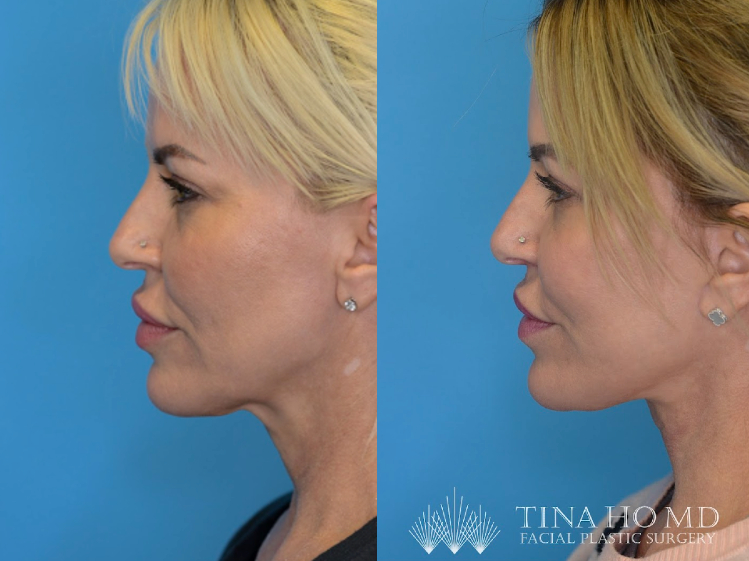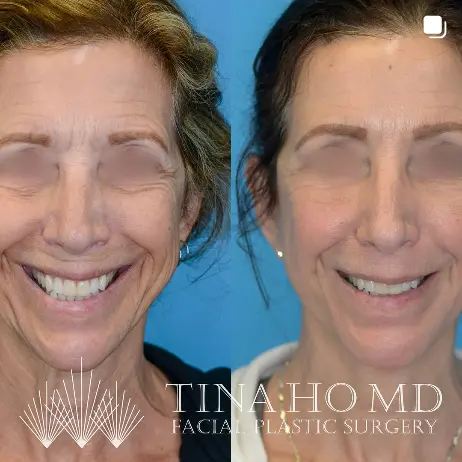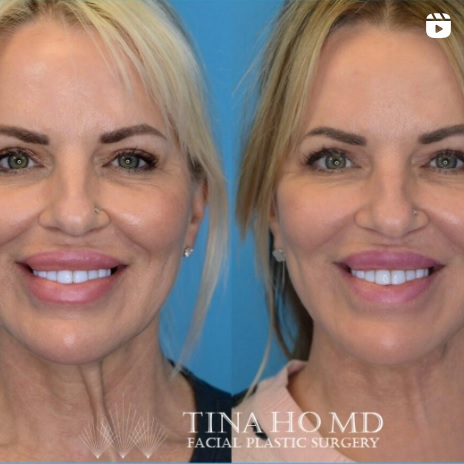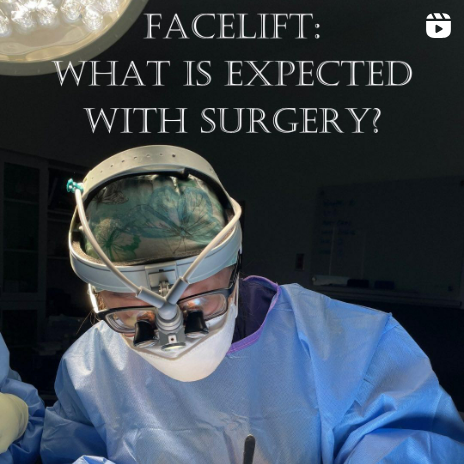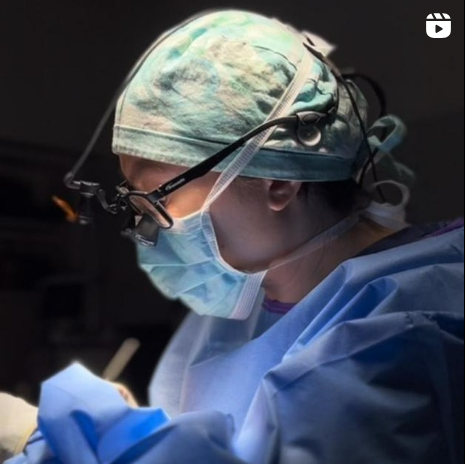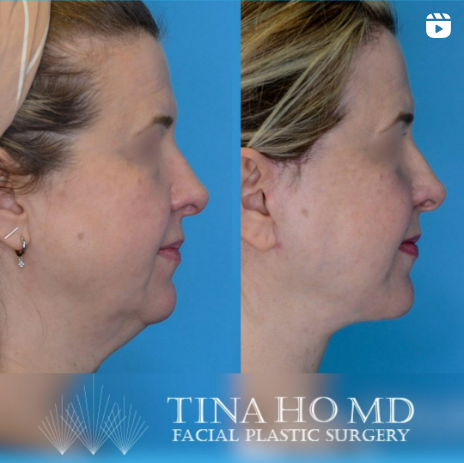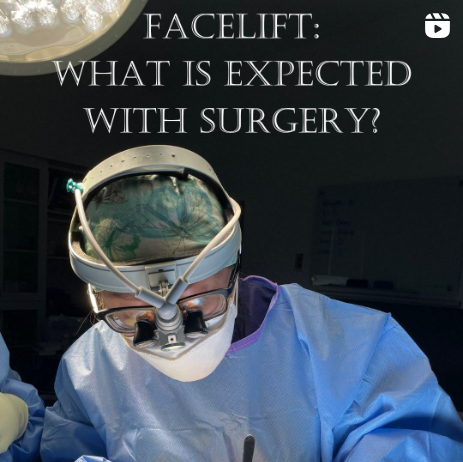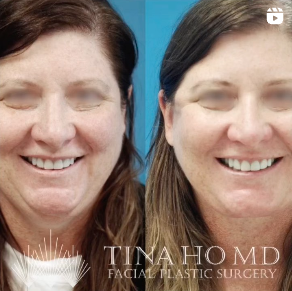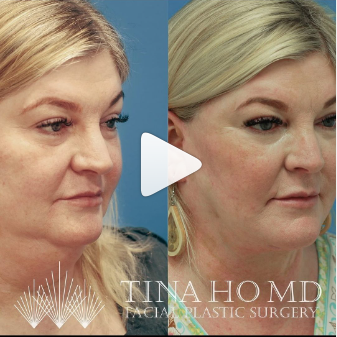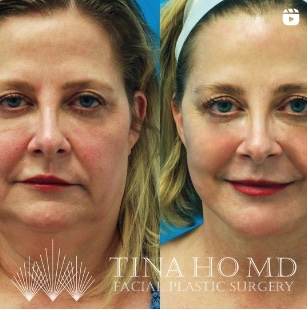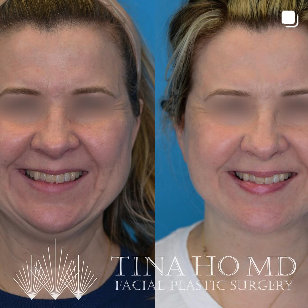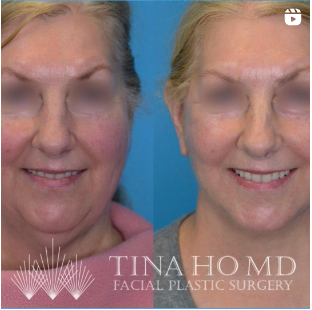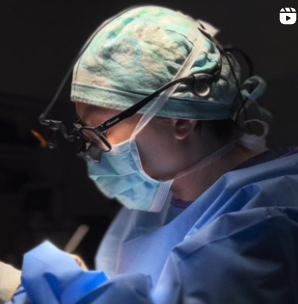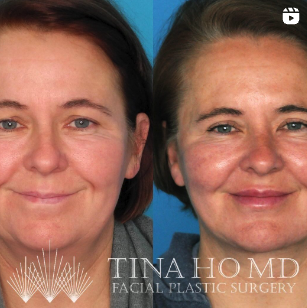Table of Contents
Book Now


Before & After
View Gallery
Introduction to
Deep Plane Facelift
The deep plane facelift offers both the most natural and dramatic approach to facial rejuvenation for the aging face.. The procedure avoids the problem of the tight, overfilled look of many modern facelifts. The main tenet of the procedure is that it lifts only the Superficial muscular aponeurotic system layer or SMAS layer, the connecting layer between the facial skin and muscle. This surgical approach leaves the skin attached to the muscle layers, so it can never look too tight. It also lifts the cheeks by releasing fully the tethering points of the face, so the addition of fat or filler is unnecessary.
What is a Deep Plane Facelift?
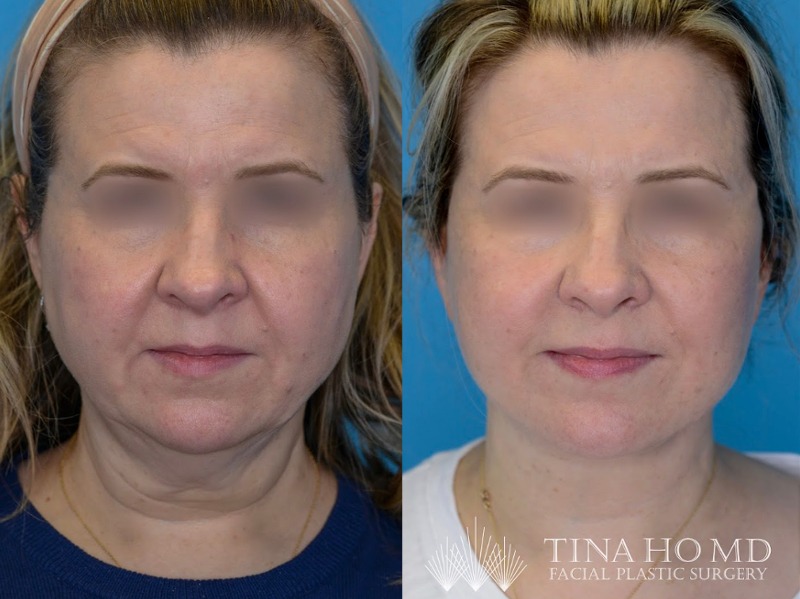
A deep plane facelift is one type of surgical technique in facelift surgery used to rejuvenate the facial features and address the signs of aging. It is a more advanced and comprehensive approach compared to traditional facelift procedures.
Unlike other facelift techniques that primarily focus on skin lifting and tightening and repositioning the deeper structures more laterally in the face, a deep plane facelift involves lifting and repositioning the underlying deep plane structures across both the medial and lateral face. By lifting the deep plane, the surgeon can achieve more natural and longer-lasting results.
The deep plane technique targets the mid-face region, including the cheeks and nasolabial folds, as well as the jawline and neck. By addressing the deeper tissues, the deep plane facelift can provide more significant correction of sagging skin, jowls, and loss of facial volume. It can also improve the appearance of the jawline and reduce the prominence of wrinkles and creases.
Who is a Good Candidate?
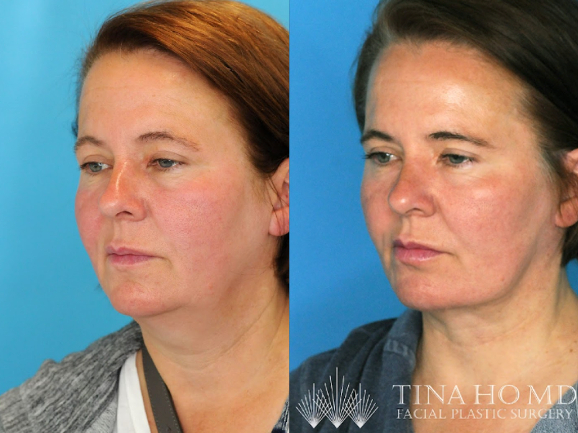
When you are contemplating a deep plane facelift, it is important to consult with a skilled, experienced Philadelphia facial plastic surgeon, such as Dr. Tina Ho, who specializes in deep plane facelift surgery. She will assess your specific facial features, share deep plane facelift before and after photos of previous clients, discuss your concerns and goals, and determine if you are a suitable candidate for the procedure.
A deep plane facelift is typically recommended for individuals who are experiencing moderate to significant signs of facial aging and those who desire comprehensive facial rejuvenation. Good candidates for a deep plane facelift may exhibit the following characteristics.
Moderate to Advanced Signs of Aging
Candidates for a deep plane facelift often have noticeable facial sagging, jowls, deep wrinkles, and loose skin in the mid-face, jawline, and neck area. They may also have experienced the loss of facial volume and definition.
Healthy Overall Condition
Candidates should be in good overall health and have no medical conditions that could increase the risks associated with surgery and anesthesia.
Realistic Expectations
It is important for candidates to have realistic expectations about the outcomes of a deep plane facelift. While the procedure can produce significant improvements, it cannot stop the natural aging process. Candidates should understand the potential benefits and limitations of the procedure.
Non-Smokers
Smoking can negatively impact the healing process, increase the risk of complications, and affect facelift results. Candidates who smoke will be advised to quit smoking for a certain period before and after the surgery.
Good Skin Quality
Candidates with relatively good skin elasticity and quality tend to have more favorable results from a deep plane facelift. However, this will be evaluated during the consultation, and the surgeon can recommend additional treatments or adjustments if necessary.
Deep Plane Facelift Results
BEFORE & AFTER PHOTOS
Benefits of Deep Plane Facelift
A deep plane facelift offers several benefits compared to traditional facelift techniques including wide-ranging rejuvenation of the face with a completely natural appearance. The following are some of the key advantages of a deep plane facelift.
Comprehensive Facial Rejuvenation
A deep plane facelift addresses multiple layers of facial tissues, including the deeper structures such as muscles and fibrous connective tissue. By lifting and repositioning the SMAS layer more medially and completely releasing the key ligaments of the face compared to other approaches, this technique can provide a more comprehensive and natural-looking rejuvenation compared to procedures that primarily focus on superficial skin tightening and addressing the SMAS layer only laterally in the face.
Longer-Lasting Results
The deep plane facelift aims to reposition the underlying deep structures, allowing for more sustainable and longer-lasting outcomes. By targeting the SMAS layer and releasing ligaments of the face, the procedure can address sagging skin, jowls, and loss of facial volume, providing more significant and durable improvements.
Natural-Looking Results
The deep plane facelift in Philadelphia focuses on repositioning the deeper facial structures, resulting in a more natural and less “pulled” appearance. It can restore youthful contours and proportions, enhancing facial harmony while maintaining the individual’s unique facial characteristics.
Improved Midface Rejuvenation
The deep plane facelift specifically targets the mid-face region, including the cheeks and nasolabial folds. By lifting and repositioning the SMAS layer in this area, the deep plane facelift can address midface sagging, restore volume, and improve the overall balance and youthfulness of the face without the need for additional fat or filler injection.
Enhanced Jawline and Neck Contour
In addition to the mid-face, the deep plane facelift combined with a neck lift can also improve the appearance of the jawline and neck. It can help tighten sagging skin, reduce the prominence of jowls, and redefine the jawline, resulting in a more sculpted and youthful neck and jawline profile.
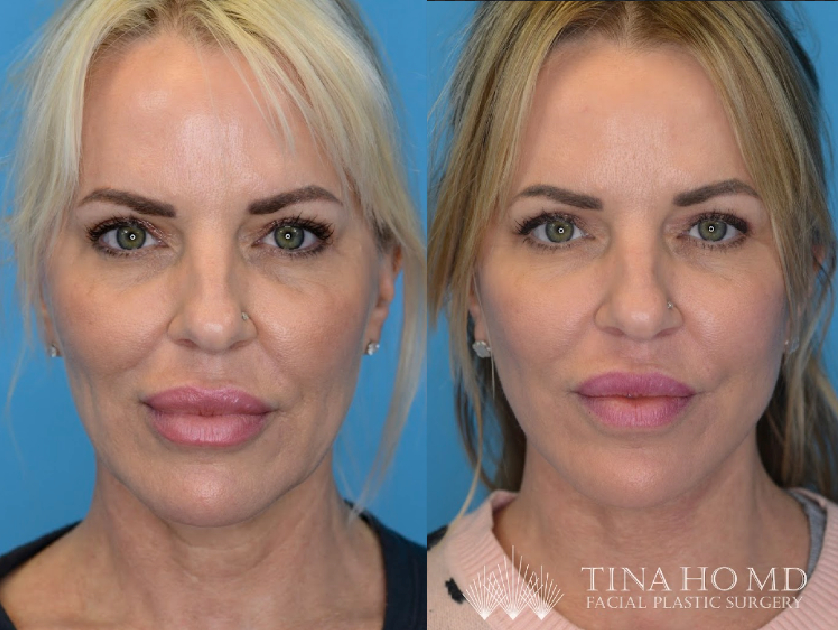
Deep Plane Facelift Educational Videos
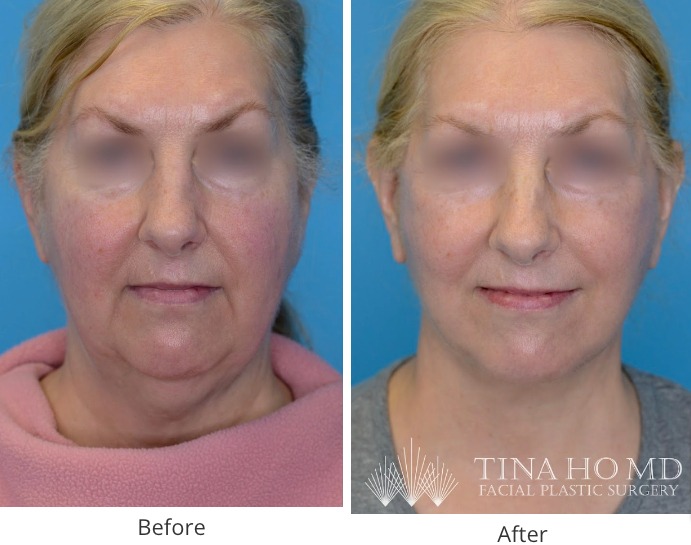
What to Expect from the Results of Deep Plane Facelift
The results of a deep plane facelift can vary depending on individual factors and the specific techniques used during the procedure. However, here are some general expectations regarding the outcomes of a deep plane facelift.
Facial Rejuvenation
A deep plane facelift aims to address multiple signs of aging, including sagging skin, jowls, and loss of facial volume. The procedure can restore a more youthful and refreshed appearance to the face, improving facial contours as well as proportions.
Reduction of Wrinkles and Folds
The deep plane facelift can help reduce the appearance of deep wrinkles, such as nasolabial folds, marionette lines, and smile lines. By repositioning the deeper facial tissues, it smooths out these lines, creating a more youthful and rejuvenated facial expression.
Improved Midface And Cheek Contours
One of the primary goals of a deep plane facelift is to address sagging in the mid-face region. By lifting and repositioning the SMAS layer and fully releasing the tethering ligaments of the face, the procedure can restore volume and lift the cheeks, enhancing the overall facial harmony and balance.
Natural-Looking Results
Deep plane facelift techniques focus on repositioning and lifting the deeper facial structures, rather than simply tightening the skin or deeper layers. This approach can result in more natural-looking outcomes, avoiding a “pulled” or artificial appearance.
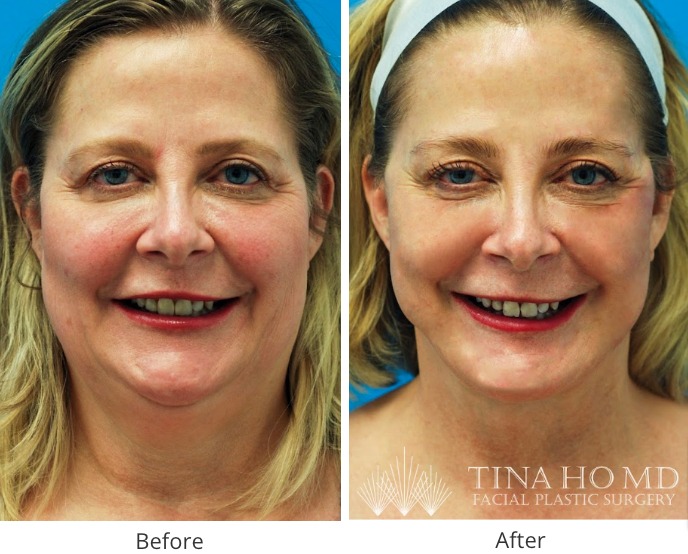
The Average Cost of a Deep Plane Facelift in Philadelphia
The deep plane facelift cost in Philadelphia can vary significantly due to several influential factors including the specific geographic location within the city, the reputation and experience of the surgeon performing the procedure, the complexity of the individual case, and the choice of medical facility. On average, in Philadelphia, the deep plane facelift cost typically falls within the range of $16,000 to $18,000.
However, it is crucial to understand this is an estimate only and may be higher or lower depending on the unique circumstances of each patient and the other factors mentioned.
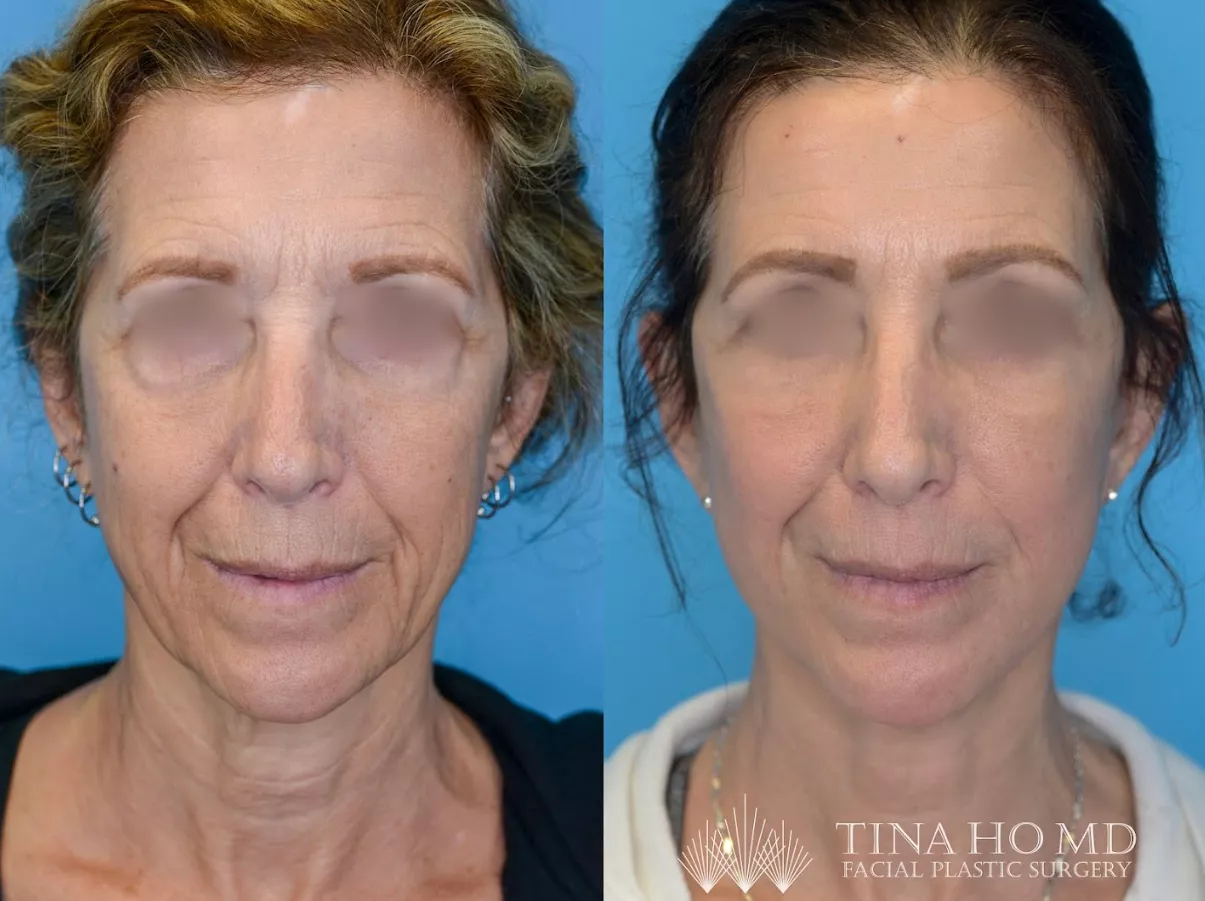
Deep Plane Patient Testimonial
The Recovery Process Following A Deep Plane Facelift
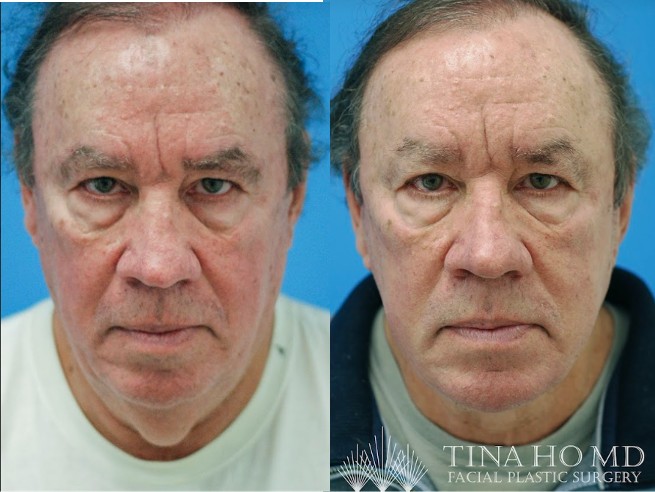
The recovery process following a deep plane facelift can vary from person to person, and it is important to follow your surgeon’s specific post-operative instructions. However, here are the general guidelines and expectations for the recovery period.
Immediate Postoperative Period
After the deep plane facelift, you will likely experience some swelling, bruising, and discomfort in the treated areas. Your surgeon will place dressings or bandages to protect the incision sites. It is common to feel tightness and numbness in the face initially. Drinks are typically placed as well and removed one week later.
Pain Management
Your surgeon will prescribe pain medication or recommend over-the-counter pain relievers to manage any discomfort. It is important to take medications as directed and communicate any excessive pain or other concerns to your surgeon.
Recovery Timeline
The initial recovery period typically lasts one to two weeks, during which you should plan to take time off from work and limit physical activity. Swelling and bruising will gradually subside over this time. However, it is important to note that full resolution of swelling and final results will take several months to a year.
Follow-Up Appointments
You will have follow-up appointments scheduled with your surgeon so that progress can be monitored and ensure proper healing. They will remove any sutures or dressings, assess your incisions, and address any concerns or questions you may have. You will be seen by Dr. Ho the day following surgery then at one week, two weeks, and one mouth out from surgery followed by every three months the first year after surgery.
Activities and Restrictions
Your surgeon will provide specific instructions on when you can resume normal activities, including exercise and strenuous physical activities. It is crucial to follow these guidelines to promote proper healing and minimize complications.
Scar Management
Your surgeon may recommend scar management techniques, such as keeping the incision sites clean, applying ointments, or using silicone sheets or gels to minimize the appearance of scars. It is important to protect your incisions from sun exposure and follow your surgeon’s instructions for scar care.
Gradual Return To Normal Routine
As the recovery progresses, you can gradually return to your normal routine. You will need to avoid exercise and heavy lifting for two weeks. However, it is important to listen to your body, avoid excessive sun exposure, and continue practicing good skincare habits. Remember, individual recovery experiences can vary, and it is important to consult with your surgeon for personalized instructions and guidance throughout the recovery process. They will provide you with specific post-operative care recommendations based on your unique circumstances and help you achieve the best possible results from your deep plane facelift.
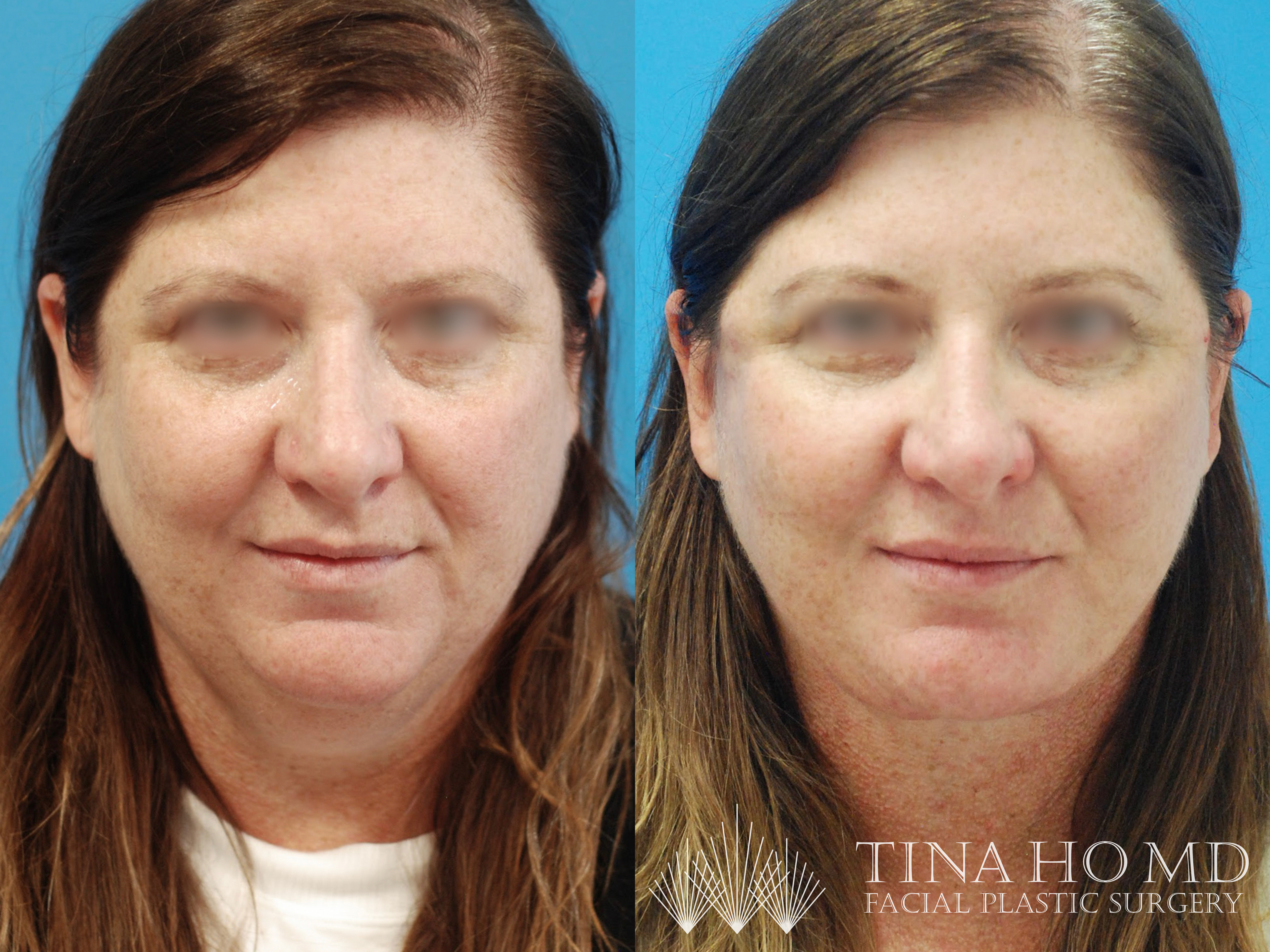
Your Deep Plane Facelift From Tina Ho, MD, Facial Plastic Surgeon, Awaits
Your deep plane facelift in Philadelphia will target the deeper layers of facial tissues to provide comprehensive and long-lasting rejuvenation. It can address sagging skin, loss of volume, and deep wrinkles in the mid-face, lower face, and neck areas. By repositioning and lifting the deeper structures and releasing the tethering ligaments, this technique offers more natural-looking results compared to traditional facelift procedures. To experience your deep plane facelift, get in touch with Tina Ho MD Facial Plastic Surgery today.
Book Now
Deep Plane Facelift Testimonials
“I strive to create a fresh, more youthful, and unoperated look for every facelift and neck lift patient.”
– Dr. Tina Ho

FAQ’s

How long do deep plane facelifts last?
On average, the results of a deep plane facelift in Philadelphia can be expected to last approximately 10 to 20 years. This longevity is due to the comprehensive nature of the procedure, which requires the repositioning and tightening of the deeper layers of facial tissues, resulting in more substantial and sustainable outcomes compared to other facelift techniques.
However, it is important to note that individual experiences may differ. Factors such as genetics, sun exposure, smoking, and overall health can influence the rate at which the aging process continues. Additionally, lifestyle choices and skincare routines play a significant role in maintaining the results achieved from a deep plane facelift.
What is the average age for a deep plane facelift?
The average age for a deep plane facelift can vary, as it depends on individual factors such as genetics, lifestyle, and the degree of facial aging. Generally, deep plane facelifts are most commonly performed on individuals who are in their 40s to 60s.
At this age range, many people start to experience noticeable signs of aging in the face, such as sagging skin, loss of volume, and deep wrinkles. Deep plane facelifts are particularly beneficial for individuals with moderate to advanced signs of aging who desire comprehensive facial rejuvenation.
Is a full facelift better than a deep plane facelift?
The choice between the two procedures depends on factors such as the severity of aging concerns, desired outcomes, and the expertise of the surgeon. In some cases, a combination of techniques may be recommended to achieve the best results.
The deep plane facelift is generally considered a more advanced technique and provides more all-inclusive rejuvenation and longer-lasting results than a traditional facelift. However, it does involve increased surgical complexity.
Does a deep plane facelift improve the neck?
Yes, a deep plane facelift performed with neck lift can improve the appearance of the neck. While the primary focus of a deep plane facelift is to address the mid-face and lower face, the procedure can have a positive impact on the neck as well.
Book Now

